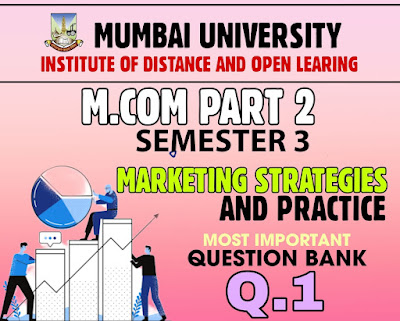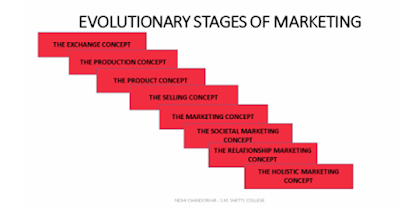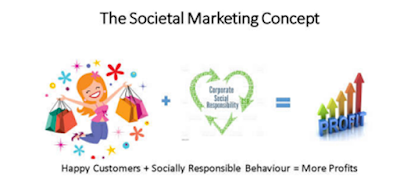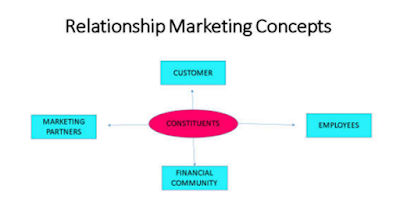M.COM. SEMESTER - III
BUSINESS STUDIES (MANAGEMENT)
MARKETING STRATEGIES AND PRACTICE
Q.1.
Discuss the stages of evolution of Marketing Strategies.
ANS:
Marketing
has been there since hundreds of years. But during these years it has undergone
tremendous changes. The changes can be seen through these concepts.
1. The
Exchange Concept:
This was
prevalent before industrial revolution. The buyer did not have much choices.
The sellers did not have competition as number of firms were very limited. The
essence of marketing during this time was the seller used to exchange goods of
service against money.
Customer did
not have choice and had to buy the only product available. Customer’s
convenience and choice was not taken into consideration. Emphasis was given to
profit. The concept of market research, research and development, innovation,
after sales service and customer satisfaction was not at all important.
2. The
Production Concept:
This concept
initiated during and after Industrial revolution. This time was characterized
large volume of production and affordability of customers was declining due to
economic stress. Hence, the essence of marketing during this time was that the
consumer will buy the products which are widely available and are lesser in
price. Marketers believed in bringing economies of scale by undertaking large
scale production to reduce the cost of production. Therefore, to maximize Introduction
to Marketing Strategies profit the management adopted the strategies of large-scale
production, wide distribution and lowest possible price.
3. The
Product Concept:
This concept
was based on the fact that consumer prefer to buy products which are better
than others. Hence, focus was product excellence. Improvement in products in
terms of quality, performance, appearance and features were done to attract the
customers. The organizations focused on adding unique features to the product
and making it better in terms of utility. But these improvements and
betterments were not based on customers’ preferences and desires. Neither was
it focused on customer satisfaction. Minimal market research was conducted
before bringing changes in the products. This concept was suffering with Market
Myopia as it did not serve its purpose of profit maximization for long.
4. The
Selling Concept:
This concept
focused on aggressive promotion and sales. The companies wanted to sell
whatever they produced, rather than producing what they can sell. Importance
was given on communication to the customers to attract them to buy the
products. Many firms suffered with over-capacity and were aggressively looking
for opportunities to sell. Many a times the firm spent aggressively on
promoting the products which the customers are not willing to buy or which has
a saturated market.
The Selling
Concept in Marketing which focuses on making the product available and luring
customers by keeping price low
5. The
Marketing Concept:
Finally, in
this phase the focus shifted to customers. Attention was paid on providing
customers what they want to beat competition. Marketing Strategies and practices
Research was conducted to understand the customers need and desires and
marketing plans were made based on that. Profits were earned by integrated
marketing efforts and understanding customer needs.
The
Marketing Concept of marketing product is designed keeping in mind customer
preferences and designing marketing mix based on it
6. The
Societal Marketing Concept:
In this the
social well-being was also integrated in the concept of marketing. Social
well-being includes well-being of not only consumer but also society at large.
Marketers do not just market product but also promote the socially responsible behaviour
exhibited by the company while conducting their businesses. Detailed research
is conducted to understand the customers need, want and desire and provide
products and service which will give delight to the customers. The firms attain
edge over the competitors by having happier customers and better image due to socially
responsible behaviour.
The Societal
Marketing Concept does not only provide satisfaction to the customer but also
enhances the image of brand by exhibiting socially responsible behaviour Introduction
to Marketing Strategies
7. The
Relationship Marketing:
The focus in
this concept goes beyond customers. It emphasizes on enduring and sustained
relationship with all key people associated with and within the organization.
These people can be marketing partners like distributors, retailers,
wholesalers and other intermediaries; financial partners like funders,
shareholders, financial institutions etc. and employees and management etc. It
is believed that all these stakeholders play direct and indirect role in serving
the customers better. The organization should develop strategies for creating
effective network with all the internal and external stakeholders.
The
Relationship Marketing works for not only having a satisfied customers by
continued relationship with them but also focuses on developing and maintaining
healthy relationship with all stakeholders who help serving customers.
8. The
Holistic Marketing Concept:
The modern
marketing strategists today adopt Holistic Approach. They believe that
marketing starts within the organisation. Marketing is not solely the job of a
dedicated marketing department but all the departments of the organisation need
to join hands. This is known as Holistic Orientation. The entire organisation,
right from finance to human resource, R& D to production have to work
together to deliver right product in price at right place to the customers. To
get this result, all the stakeholders of the organisation like employees,
suppliers, buyers, shareholders, funders etc. are treated like customers. As
they will be able to serve better, if they are served well. Some key components
of Holistic Marketing concept are
·
Internal
marketing: Marketing (coordination and cooperation) between all the departments
in an organization Marketing Strategies and practices
·
Relationship
marketing: Building a better relationship with the customers, internal
(employees, management etc.) as well as end customers is beneficial for
holistic marketing
·
Performance
marketing: Driving the sales and revenue growth of an organization holistically
(by involving all departments and intermediaries) by reducing costs and
increasing sales.
·
Integrated
marketing: Products, services and marketing should work hand in hand towards to
growth of the organization.
Example of
Holistic Marketing Strategy – Samsung has adopted holistic marketing by
involving various organizational function for providing satisfying service to
the customers
If you want exam most important question bank pdf then you have to pay per subject 100/- rupees only .
Contact 8652719712 / 8779537141
Telegram Group
Mumbai Univeersity :- https://t.me/mumbaiuniversityidolSuraj Patel Education :- https://t.me/surajpateleducationF.Y.J.C EXAM :- https://t.me/FYJCexamS.Y.J.C EXAM :- https://t.me/SYJCexamF.Y EXAM :- https://t.me/fyexamS.Y EXAM :- https://t.me/syexamT.Y EXAM :- https://t.me/tyexamM.Com Part 1 EXAM :- https://t.me/McomPart1ExamM.Com Part 2 EXAM :- https://t.me/McomPart2ExamM.A EXAM :- https://t.me/mastudentsexam YouTube Channel
https://www.youtube.com/channel/UCv8JIY58xfWHUIXVu9wxNHw
YouTube Channel
https://www.youtube.com/channel/UCv8JIY58xfWHUIXVu9wxNHw







